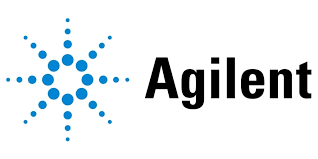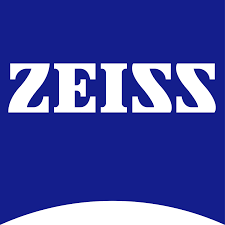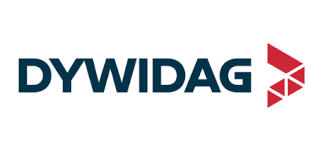Digital Language Learning
Published Date: 06 October 2025 | Report Code: digital-language-learning
Digital Language Learning Market Size, Share, Industry Trends and Forecast to 2033
This comprehensive report on Digital Language Learning explores key market insights, emerging trends, and data-driven forecasts for the period 2024 to 2033. It provides an in-depth analysis of market size, growth drivers, segmentation, regional performance, and the impact of technological innovations on learning methodologies, offering valuable information for stakeholders and decision makers.
| Metric | Value |
|---|---|
| Study Period | 2024 - 2033 |
| 2024 Market Size | $12.00 Billion |
| CAGR (2024-2033) | 9.5% |
| 2033 Market Size | $27.96 Billion |
| Top Companies | LinguaTech Solutions, EduLingo Global, VerbaLearn Inc. |
| Last Modified Date | 06 October 2025 |
Digital Language Learning (2024 - 2033)
Digital Language Learning Market Overview
Customize Digital Language Learning market research report
- ✔ Get in-depth analysis of Digital Language Learning market size, growth, and forecasts.
- ✔ Understand Digital Language Learning's regional dynamics and industry-specific trends.
- ✔ Identify potential applications, end-user demand, and growth segments in Digital Language Learning
What is the Market Size & CAGR of Digital Language Learning market in 2024?
Digital Language Learning Industry Analysis
Digital Language Learning Market Segmentation and Scope
Tell us your focus area and get a customized research report.
Digital Language Learning Market Analysis Report by Region
Europe Digital Language Learning:
Europe continues to be a key contributor to the Digital Language Learning market, with market size expected to grow from 3.21 in 2024 to 7.47 by 2033. The region benefits from strong governmental support for digital transformation in education and a high level of technological adoption within its education systems.Asia Pacific Digital Language Learning:
In Asia Pacific, the Digital Language Learning market is positioned for robust growth as increasing disposable incomes and a young, tech-savvy population drive demand. With market size expanding from a baseline of 2.35 in 2024 to an anticipated 5.47 by 2033, regional players are investing in localized content and mobile-based solutions to cater to diverse language preferences.North America Digital Language Learning:
North America remains a mature market with significant advancements in digital educational technologies. The market is projected to increase from 4.32 in 2024 to 10.07 by 2033, reflecting an ongoing demand for personalized learning experiences, driven by innovation and high consumer spending on advanced learning platforms.South America Digital Language Learning:
South America is witnessing steady growth, driven by rising internet penetration and a growing emphasis on digital education. The region’s market size is evolving from 0.98 in 2024 to an estimated 2.28 in 2033, supported by both public and private initiatives aimed at increasing digital literacy.Middle East & Africa Digital Language Learning:
The Middle East and Africa are emerging as important growth regions, marked by improvements in digital infrastructure and increasing investment in technology education. The region’s market is anticipated to expand from 1.14 in 2024 to 2.67 by 2033, as digital language solutions become increasingly accessible and affordable.Tell us your focus area and get a customized research report.
Digital Language Learning Market Analysis By Platform
Global Digital Language Learning Market, By Platform Market Analysis (2024 - 2033)
The by-platform segment dissects the market into mobile applications and web-based platforms. Mobile applications dominate the space with a significant share, driven by their ease of use and constant connectivity, accounting for a market size that is projected to rise from 9.92 in 2024 to 23.12 by 2033. Meanwhile, web-based platforms complement these mobile solutions by offering structured content and diverse learning modules. Innovations in user interface design and platform security are central to sustaining growth in both channels, supported by continuous updates and feature enhancements driven by user feedback and advanced analytics.
Digital Language Learning Market Analysis By Methodology
Global Digital Language Learning Market, By Methodology Market Analysis (2024 - 2033)
This segment evaluates the methods employed in digital learning, primarily focusing on interactive learning, self-paced learning, and live tutoring. Interactive learning, which is the most preferred method, offers immersive, real-time engagements, and its market share is significant with growth noted from 8.01 in 2024 to 18.67 by 2033. Self-paced solutions and live tutoring further cater to niche needs, with each offering unique benefits—from flexibility to personalized instructor-led sessions. The overall methodology landscape is characterized by a blend of synchronous and asynchronous approaches, ensuring learning content is accessible and effective for a diverse user base.
Digital Language Learning Market Analysis By Language
Global Digital Language Learning Market, By Language Offered Market Analysis (2024 - 2033)
Language segmentation provides valuable insights into course preferences, with English maintaining a dominant position, capturing nearly half of the market share. Additional languages such as Spanish, Mandarin, and French also show substantial growth, supported by increasing globalization and migration. The segment has seen English courses expanding from a market size of 5.53 in 2024 to 12.89 in 2033, while Spanish and Mandarin are improving steadily. The content diversity in language offerings caters to varying cultural and educational needs, making language selection a critical component of market strategy for providers looking to appeal to a global audience.
Digital Language Learning Market Analysis By Audience
Global Digital Language Learning Market, By Audience Market Analysis (2024 - 2033)
Audience segmentation covers children, adults, and professionals, each with distinct learning requirements. Children form the largest group, reflected in robust growth figures that indicate both high adoption rates and continual engagement through gamified and interactive content. Adult learners and professionals are increasingly seeking specialized courses to upskill and adapt to market trends. Customized curricula and flexible learning schedules are significant in addressing the needs of these segments. The nuanced approach ensures that learning solutions are tailored to appropriate cognitive and career requirements, ultimately driving an inclusive and effective digital education environment.
Digital Language Learning Market Analysis By Subscription Type
Global Digital Language Learning Market, By Subscription Type Market Analysis (2024 - 2033)
The by-subscription-type segment explores how various pricing models influence market dynamics. Monthly subscriptions dominate due to their affordability and flexibility, evidenced by market sizes growing from 8.01 in 2024 to 18.67 by 2033. Annual subscriptions and one-time purchase options provide alternative revenue streams for consumers preferring long-term commitments or one-off investments. This segmentation not only reflects user preferences in payment structure but also highlights the adaptability of providers to offer varied plans that cater to different financial capacities, thereby broadening the overall market base.
Digital Language Learning Market Trends and Future Forecast
Tell us your focus area and get a customized research report.
Global Market Leaders and Top Companies in Digital Language Learning Industry
LinguaTech Solutions:
LinguaTech Solutions is renowned for its innovative digital platforms that integrate AI-driven personalization with interactive learning techniques. Their commitment to continuous improvement and customer-centric approach has solidified their position as a market leader in the digital language learning sector.EduLingo Global:
EduLingo Global is a pioneer in delivering comprehensive language learning experiences through mobile applications and web-based platforms. Their diverse course offerings and strategic collaborations have enabled them to capture a significant share of the market while setting high standards for digital education.VerbaLearn Inc.:
VerbaLearn Inc. specializes in bespoke language learning solutions, focusing on adaptive learning methodologies. Their integration of real-time feedback and multi-platform accessibility has garnered global recognition, making them a key player in the industry.We're grateful to work with incredible clients.









FAQs
What is the market size of digital Language Learning?
The digital language learning market is expected to grow from a market size of $12 billion in 2024, with a projected CAGR of 9.5% through 2033, indicating substantial growth in this innovative education sector.
What are the key market players or companies in this digital Language Learning industry?
Key players in the digital language learning industry include renowned companies such as Rosetta Stone, Duolingo, Babbel, and Busuu, among others, which are pivotal to market innovation and diverse language offerings.
What are the primary factors driving the growth in the digital Language Learning industry?
Growth in the digital language learning industry is driven by factors such as increased globalization, the rise of e-learning, advancements in mobile learning technology, and a growing emphasis on competitive multilingualism in job markets.
Which region is the fastest Growing in the digital Language Learning?
The fastest-growing region for digital language learning is North America, with market size projected to increase from $4.32 billion in 2024 to $10.07 billion by 2033, showcasing robust consumer adoption and investment in technology.
Does ConsaInsights provide customized market report data for the digital Language Learning industry?
Yes, ConsaInsights offers customized market report data tailored to specific needs within the digital language learning industry, allowing clients to gain insights that are relevant to their strategic goals.
What deliverables can I expect from this digital Language Learning market research project?
Deliverables include a comprehensive market analysis report, segmented data views, competitor analysis, market growth forecasts, and insights into key trends that influence the digital language learning landscape.
What are the market trends of digital Language Learning?
Current trends in digital language learning include increasing utilization of mobile applications, the shift towards interactive and self-paced learning modules, and a rising demand for personalized learning experiences among diverse age groups.
